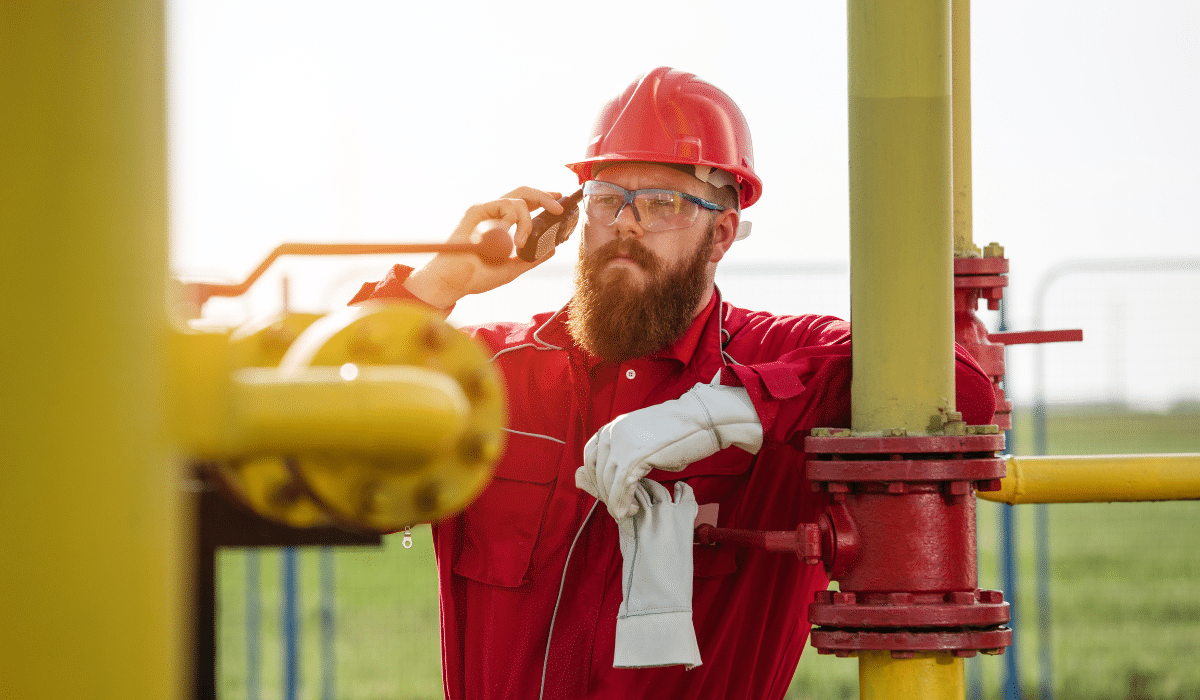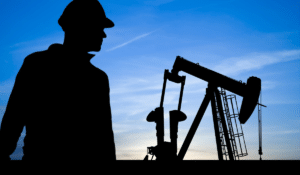In the oil and gas industry, respiratory protection is a critical component of worker-safety. Workers in the industry are regularly exposed to a variety of airborne hazards, including toxic gases, vapors, and particulates. These hazards can cause respiratory distress, lung damage, and other serious health problems, including death.
And, that’s why proper respiratory protection is essential to minimize risks and protect your workers’ health and safety.
Sadly, following breaches in safety protocols, a worker in an El Paso oil and gas waste company was exposed to high levels of hydrogen sulfide, amongst other hazards, and paid the ultimate price.
Let’s take a look at what went wrong, and how it could have been prevented.
Related Article: Are You Forgetting This Key Part to the Respirator Standard?

What Is Hydrogen Sulfide?
Hydrogen sulfide [H2S], also known as ‘sewer gas’, ‘swamp gas’, ‘stink damp’, or ‘sour damp’; is a colorless, flammable gas commonly found in oil and gas fields, with a strong odor of rotten eggs.
Aside from its strong odor, it’s also a highly toxic gas that can cause eye irritation, respiratory distress, loss of consciousness, and even death. And, as part normal operations, workers in the oil and gas industry are regularly exposed to hydrogen sulfide, making proper safety protocols critical to their well-being.
Like many toxic substances, the dangers rise with the level of exposure experienced, depending on the dose, duration, and work being done.
Now, following lapses in safety procedures, an oil and gas waste company has been cited by the U.S. Occupational Safety and Health Administration after a worker suffered fatal exposure to hydrogen sulfide in September 2022 in El Paso, Texas.
According to the investigation, the employee was working near a sump pit when he was exposed to high levels of the gas. The hydrogen sulfide had accumulated in the pit – a common occurrence in the oil and gas industry.
However, in this instance, the employee was not wearing the proper personal protective equipment, and the company had not provided adequate ventilation in the area.
The employee was said to have collapsed, and later died from the exposure to the gas, while skimming and suctioning out sludge water and oil byproducts from the sump pit
Related Article: Heavy Metal Testing Should Not be Taken Lightly
The Citations and Penalties
Consequently, OSHA issued citations to the company for six serious safety and health violations after the agency found the production waste facility exposed employees to serious chemical hazards.
OSHA cited the company for:
- Exposing employees to inhalation hazards;
- Not training employees on hazards associated with hydrogen sulfide exposure;
- Failing to provide a quick body drench or eye flush station for employees in the immediate work area where corrosive materials were present;
- Not performing a hazard assessment to determine if personal protective equipment was needed;
- Failing to protect employees from fall hazards of more than 4 feet; and
- Not protecting employees from contacting energized circuits.
Following this event, OSHA assessed $39,064 in proposed penalties, which are set by federal statute. Now, the company has 15 business days from receipt of its citations and penalties to comply, request an informal conference with OSHA’s area director or contest the findings before the independent Occupational Safety and Health Review Commission.
Respiratory Protection for Workers In the Oil and Gas Industry
Respiratory protection helps minimize these risks by preventing workers from inhaling contaminated air. OSHA requires employers to provide workers with respiratory protection when working in environments with hazardous levels of airborne contaminants.
There are several types of respiratory protection available to workers in the oil and gas industry.
The most common types of respiratory protection include:
- Disposable Respirators: These are typically single-use, non-powered respirators, designed to protect workers from airborne hazards. While they’re affordable and easy to use, they do not provide as much protection as other types of respirators.
- Half-Mask Respirators: These respirators cover the nose and mouth, and are equipped with replaceable filter cartridges. They provide better protection than disposable respirators and are more comfortable to wear for extended periods than larger systems.
- Full-Face Respirators: These respirators cover the entire face and provide the most protection. They are typically equipped with filter cartridges or canisters, which remove contaminants from the air.
- Powered Air-Purifying Respirators (PAPRs): These respirators use a battery-powered blower to force air through a filter cartridge or canister, providing the wearer with clean air to breathe.
They are suitable for use in environments where the air is highly contaminated.
Read more on OSHA’s Respiratory protection as it relates to oil fields.
Bringing It Together
Respiratory protection is essential to worker-safety in the oil and gas industry, to help avoid not only hydrogen sulfide exposure, but numerous other dangers, as well.
Workers are regularly exposed to airborne hazards that can cause serious health problems, and proper respiratory protection is necessary to minimize these risks.
As an employer, you must provide your team with appropriate respiratory protection and ensure that they are trained on proper use and maintenance.
By prioritizing worker safety, the oil and gas industry can minimize the risks associated with respiratory hazards and create a safer work environment for all employees.
***
About Worksite Medical
In most cases, OSHA requires medical surveillance testing, and at no cost to employees.
Worksite Medical makes that program easier with mobile medical testing.
We conduct on-site respirator fit tests, as well as audiometric exams, pulmonary function tests and heavy metal lab work, right on your job site. We also keep accurate, easy-to-access medical records for your convenience. You’ll keep your employees at work, and stay ahead of OSHA inspections.




